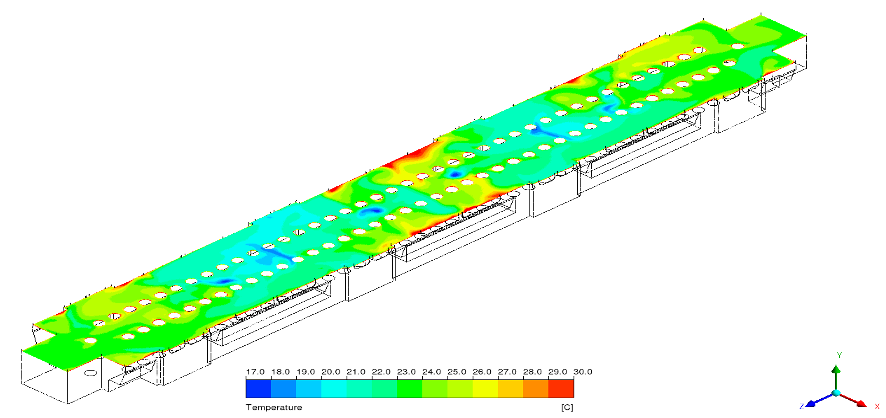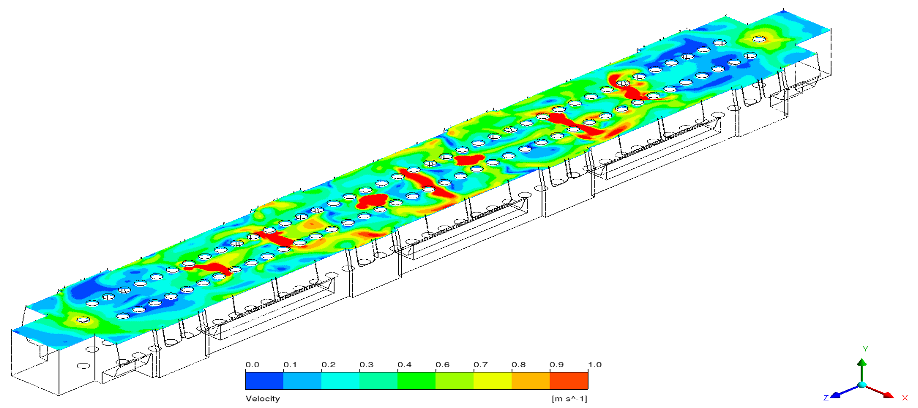Utilizing HPC Resources for HVAC CFD of Train Cabins
Bervyn Goh Yu Fen, Mechanical Engineering, NUS
Passenger thermal comfort in automotive vehicles is an important factor that determines a commuter’s overall experience. Such an experience is provided for by an efficient HVAC (Heating, Ventilation and Air-Conditioning) system which distributes cool air throughout a vehicle. It is, therefore, appropriate to conduct a computational analysis of a HVAC system for the vehicle in order to study its steady-state temperature and air velocity profile. This is made possible by using methods in computational fluid dynamics (CFD) to run simulations and obtain reasonably accurate results in order to reduce the time and costs involved in designing and testing HVAC capabilities of automotive vehicles. In this article, such a study is conducted on a Singapore train cabin to analyze its air temperature and velocity profile.
While running simulations interactively on a personal computer is viable for smaller vehicle models like cars, this may not be appropriate for larger models like trains, in which computational time and resources are expected to be much higher. This problem can be mitigated through the use of the university’s High-Performance Computing (HPC) cluster, where a simulation job can be processed by multiple computer cores in a parallel manner. For this study, the usage of the HPC cluster reduced the simulation time from approximately 3 days (when using a personal computer) to less than 24 hours.
Using ANSYS Fluent as the CFD solver, results such as temperature and velocity profiles can be obtained (see below) by ensuring an appropriate mesh, turbulence model, boundary conditions and solver settings.


The effect of passenger loading on the interior cabin temperature can also be studied by modelling humans as cylinders to analyze if the train’s HVAC system is able to provide thermal comfort in the presence of passengers, who themselves are sources of heat.
It should be noted that such CFD simulation and analysis can only predict values to a certain extent. The is due to the limited accuracy of the solver, mesh and boundary conditions. Thus, CFD applications cannot completely replace experimental data. Nonetheless, such studies can serve as a good indicator of HVAC performance of automotive vehicles and reduce the need for repeated iterations of actual experiments, which can be time consuming and costly. This is especially so when it may not be feasible to conduct experiments inside a train cabin with high passenger loading.

